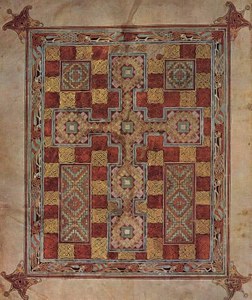Carpet pages
A beautiful element of the insular illuminated manuscripts from the 7th Century monasteries, is the “carpet pages” preceding the gospels. Each of the pages are decorated with exquisite and fine geometric patterns thought to imitate the woven prayer rugs of the time and providing the reader the same spiritual experience when reading the Bible, as did prayer rugs for those kneeling on them for prayer.



